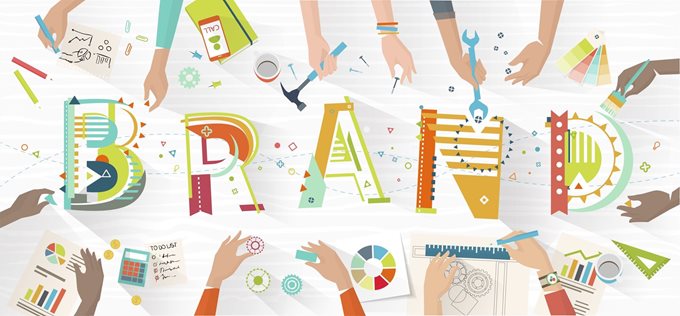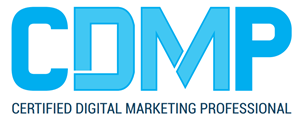If your business was a person, your brand would be its personality. It’d be how you introduce yourself to new friends (er, customers) and how you build a trusting relationship with them. Your brand is a living, breathing entity … and it’s your job to help it grow and improve.
This is what we call brand management.
Creating a brand is thrilling, but it’s not enough. As your business scales, grows, changes, and succeeds, your brand must follow suit. That’s why we created this guide — to cover the basics of brand management and equip you with the tools you need to manage and maintain a fantastic brand.
PRINCIPLES OF BRAND MANAGEMENT
Brand management is comprised of both tangible and intangible components. We’ll discuss the tangibles in the following section. The intangible components, however, include the principles that help you measure your brand management efforts and achieve those brand management success indicators that we discussed above.
You’ll also note that each of these principles can influence the others on this list. For example, heightened brand awareness can contribute to brand reputation, and increased brand loyalty can affect brand equity.

Brand Awareness
Brand awareness is how familiar the general public and your target audience is with your brand. Brand awareness is important because consumers can’t engage with or purchase products or services from your brand if they’re not aware of it.
Brand Equity
Brand equity is how consumers value your brand based on their experiences, perceptions, and associations. (This concept goes hand-in-hand with brand valuation, which is the commercial value of your brand as perceived by the market.) Brand equity is important because a valuable brand can support higher prices and increase your merit among investors, shareholders, and potential buyers.
Brand Loyalty
Brand loyalty refers to how consistently your customers and followers engage with and purchase from your brand. While your marketing can’t necessarily influence this, your customer service department can — focusing on satisfaction and relationship-building can bring customers back time and time again. Brand loyalty is important because it creates brand ambassadors who do your marketing for you.
Brand Recognition
Brand recognition is how well a consumer, ideally in your target audience, can recognize your brand — through your logo, tagline, packaging, etc. — without seeing your brand name. This concept goes hand-in-hand with brand recall, which is the ability to think of a brand without seeing or hearing any branding prompts. Brand recognition is important because, by recognizing and recalling your brand, consumers keep your brand top-of-mind and are more likely to choose your brand above the competition.
Brand Reputation
Brand reputation refers to how the general public and your target audience perceive the character, status, and quality of your brand. Your reputation can be influenced by internal factors (customer service, product quality, etc.) and external factors (customer reviews, WOM marketing, news mentions, etc.). Brand reputation is important because it can be some consumers’ first impression of your brand.
BRAND ASSET MANAGEMENT
Your brand assets are the tangible components of the brand management process, the parts of your branding that your audience can see, experience, and remember. Brand assets include any piece of your branding or marketing that is seen by the “outside world” — customers, employees, or the general public.

Brand Name
Your brand name is the primary identity of your company. As your other brand assets evolve, your brand name likely won’t ever change. If you haven’t trademarked your brand name, we encourage you to do so.
By owning the rights to your brand name, you have better leverage over unauthorized use and any competitors who attempt to copy or steal your brand. Check out HubSpot’s trademarks and Trademark Usage Guidelines as an example.
Your brand name will also likely be reflected in your website domain and social media pages. Keeping these names, identities, and handles consistent will help customers discover and follow your business.
Logo and Color Palette
Your logo and color palette embody the creative representation of your brand. These assets are important parts of your branding as they tap into emotional marketing tactics. If designed properly, they can help you attract and convert customers.
Typography
Your typography refers to your fonts and text-based assets and how they’re used in your branding. These guidelines inform any branding or marketing asset that’s designed on behalf of your business, including your website, paid advertising, social media posts, and more — all the way down to the spacing between the letters.
Graphics
Your graphics include many different brand assets — basically anything specifically designed for your brand or marketing. These could be used on your digital marketing channels (which we’ll discuss next) or developed as standalone assets, such as external slide decks, letterheads, press releases, or even marketing videos.
Your brand graphics will likely be utilized by a wide variety of people (from designers to social media marketers to content writers), so they should be well-organized and have clear instructions on how to use them.
Digital Marketing Channels
Your website, social media, and paid advertising are a few of the most important iterations of your brand. Millions of people access the internet daily, and your digital channels are likely the branding assets the most viewed by potential customers. For this reason, they must reflect your branding, and they must be consistent.
Also included in this section is your employees’ and executives’ social media accounts, as these are a reflection of your brand and a fantastic marketing opportunity to give your audience an inside look at your company and the opportunity to connect with your brand on a personal level. If your employees desire to use their profiles to market your business, ensure their accounts reflect your brand assets and follow your style guide.
Note: If members of your leadership team also manage a personal brand, chat among your team about how to align (or separate completely) this brand with your business brand. If their brand is connected in any way to your company, it should complement yours.
Packaging
If your business sells a physical product, your packaging is a critical part of your branding. For some customers (if not most), your packaging might be their first impression of your brand. Also, one-third of customers say they make purchase decisions on the packaging itself.
Your packaging is also the most tangible, experiential way that customers interact with your brand. For that reason, your packaging should reflect your branding — in its design, colors, size, and feel.
Style Guide
Your style guide is a document that instructs employees, designers, and other businesses on how to use your branding. This is an important brand asset because it informs how all other brand assets should be utilized, designed, printed, and more — all the way down to what size your logo should be and what colors are and aren’t allowed in your marketing materials.
Source: blog.hubspot.com
Training Program

The CDMP is the best training program in Digital Marketing
with DMI’s Global Standards in Digital Marketing Training. This program
will transform Marketers into Professional Digital Marketers, and
develop a new generation of Marketers for the Digital Age
OPENING DATE: November 26, 2019 in HCMC
For more information, please CLICK HERE
|